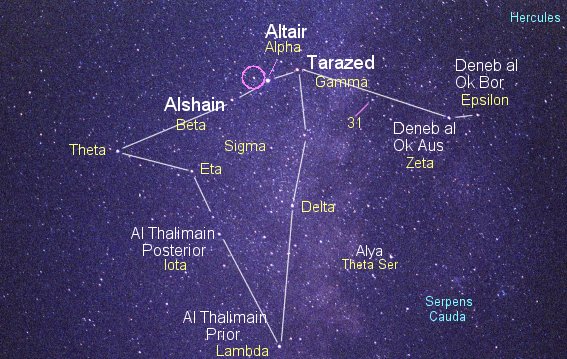 A one-time class B (on the cool side) dwarf, now a standard evolving K giant, Xi Aquilae has a
massive jupiter-like planet.
A one-time class B (on the cool side) dwarf, now a standard evolving K giant, Xi Aquilae has a
massive jupiter-like planet.
THE PLANET
The circle shows the location of the evolved class K star Xi
Aquilae (in Aquila, the Eagle).
The planet, Xi Aql b, carrying a mass of at least 2.2 Jupiters, orbits on a circular
path with a radius of 0.68 Astronomical Units (about Venus's distance from the Sun)
over a period of 137 days (0.37 years). The period is shorter than that of Venus's 225 days
because the star (see below) is more massive than the Sun.
|
 A one-time class B (on the cool side) dwarf, now a standard evolving K giant, Xi Aquilae has a
massive jupiter-like planet.
A one-time class B (on the cool side) dwarf, now a standard evolving K giant, Xi Aquilae has a
massive jupiter-like planet.
 A one-time class B (on the cool side) dwarf, now a standard evolving K giant, Xi Aquilae has a
massive jupiter-like planet.
A one-time class B (on the cool side) dwarf, now a standard evolving K giant, Xi Aquilae has a
massive jupiter-like planet.